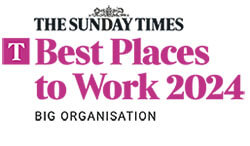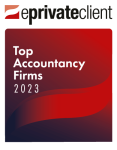14th June 2021
There are significant opportunities for tax paying schools to benefit from generous capital allowances when buying, refurbishing or constructing new buildings. As Alice Palmer outlines below, ‘The tax breaks available with capital allowances have never been so generous. Schools have a great opportunity to benefit from super capital allowances in the next two years.’
When to consider capital allowances- construction works
Capital allowances apply when carrying out construction work such as refurbishing, extending or new works, such as new student blocks, sports facilitates or labs. In the UK there is no automatic tax relief available on building work and accounts depreciation of buildings is not allowed for tax purposes. On a refurbishment or new building project then there can be tax allowances available on almost all of the expenditure from different types of allowances as detailed below.
There is typically no tax relief though for expenditure on land, planning and legal fees or soft landscaping. However, most of the other expenditure should qualify for allowances to offset against corporation tax.
Buying an existing building
Some schools have been buying existing buildings such as offices and converting, or buying other schools. If the building contains plant and machinery such as electrics, heating and lifts then allowances may be due on a proportion of the price paid. It is important to take some specialist advice (ideally before buying) to allocate part of the price paid. This is a complex area and many schools working just with their lawyers or accountants can often fail to pick up on these allowances. In some cases up to 30% of the price paid for a building may attract capital allowances. As tax specialists, we can review previous property purchases to see if extra allowances may be claimed now.
How do capital allowances work?
Capital allowances reduce taxation and any excess allowances can be carried forward to future periods. There are a range of different allowances which can be offset over different periods. The types of allowances will depend on the specific works carried out. On a typical £2m refurbishment, there may be repairs of circa £0.3m. These can provide a tax saving all in the first year. There may be £0.1m on asbestos removal which qualifies for 150% tax relief in the first year. There could be £0.6m on general pool plant and machinery (assets like carpets, equipment, fire alarms) which may qualify for 130% super capital allowances. There may be £0.7m on integral features which qualifies 50% in year one, with the balance of £0.35m spread over time at 6% on a reducing balance basis (assets like, heating, electrics, lifts). The final balance of £0.3m may qualify for Structures and Buildings Allowances (SBA), which is a slow tax relief spread over 33 years.
In total, in this example, there will be tax relief on £2.23m, which is actually more than the £2m incurred. The total tax saving over time will be multiplied by the effective tax rate. For a company, this will provide a potential total tax saving of £423,000. The allowances are therefore very valuable and will have even more value if Corporation Tax rates increase to 25% as expected in April 2023.
Super Capital Allowances
For building contracts which commenced on or after 3 March and where expenditure is incurred between 1 April 2021 and 31 March 2023, there are new super capital allowances. These provide more tax savings and much faster tax relief. If a school incurs £1m on super capital allowances it will get a tax allowance of £1.3m, all available in the first year. These allowances apply to a trading business like a school, as well as property companies. It is important to note these super allowances are only available to companies, not charities. In the UK the tax reliefs for schools are more generous than at any time in history. It is therefore a positive time to be incurring expenditure from a tax perspective.
Repair Works
Works carried out like redecorating, roof repairs and generally like for like repairs typically qualify for 100% tax relief all available in the first year. It is important to consider how repairs expenditure is recorded in the accounts, as this is one area where accounts treatment and tax treatment need to align.
150% Land Remediation Allowances
There are very generous tax breaks for remediation. In a schools context, this can apply to asbestos removal, oil removal or Japanese Knotweed clearance, where the cost is incurred by a company. However, these very generous allowances are denied if the school or a connected entity caused the original pollutants.
Annual Investment Allowance
Currently there is an Annual Investment Allowance of £1m. This is expected to reduce to just £0.2m in January 2022. It means that the first £1m of any type of plant and machinery can be offset in the first year.
Modular buildings
For modular school buildings the plant and machinery can be segregated into the different types of allowances. It is important to work with a specialist tax adviser who has these skills. For modular buildings which are capable of being moved and where there is an intention to move them, it may be possible to claim allowances on 100% of the cost.
Structures and Buildings allowances (SBA)
The SBA is a slow tax relief that applies to most of the balance of expenditure that does not qualify as plant, repairs or remediation allowances. The tax relief is provided very slowly over 33 years. As a result, it is important to segregate as much expenditure as possible into the other faster allowances. SBA does not apply to residential accommodation facilities, but will apply to the school buildings.
Loss carry back
In the recent Budget 2021 the Chancellor extended loss carry back to three years. It may therefore be a great time to revisit capital allowances claims made previously. We are helping several schools trigger repayments of Corporation Tax paid in earlier periods. There is confusion in this area about time limits but if allowances were missed several years ago, in most cases full allowances can be claimed in a current or open tax return, without amending earlier years.
Case study
We were recently asked to review the tax returns for the last six years of a private school. They had purchased an office they converted to class room accommodation and also constructed a new science facility. They had claimed full allowances on school equipment such as lab equipment, furniture and computers as this was all fully detailed on invoices. No allowances had been claimed for the plant in the building they purchased such as the heating system which was still in use. Also they had failed to claim allowances on the construction expenditure. This was because the invoices from the builder just stated building works and were not segregated. We carried out a specialist review and identified an extra £2m of allowances. This saved the school £380k of tax and we were able to make a carry back loss claim to trigger immediate repayments of tax.
Revisiting historical expenditure working with haysmacintyre
Few accountants fully claim capital allowances on building expenditure. The reason for this is because builders seldom segregate their invoices to the level of detail required to claim these allowances. At haysmacintyre we have a specialist team who can make assessments and identify the allowances missed. There is no need to reopen earlier tax returns and the allowances can be claimed in a current tax return. We can provide a free high level review to help spot these opportunities.
If you have any questions about Corporation Tax, or haysmacintyre services for Corporate Schools, please contact Alice Palmer or Tom Wilson.





